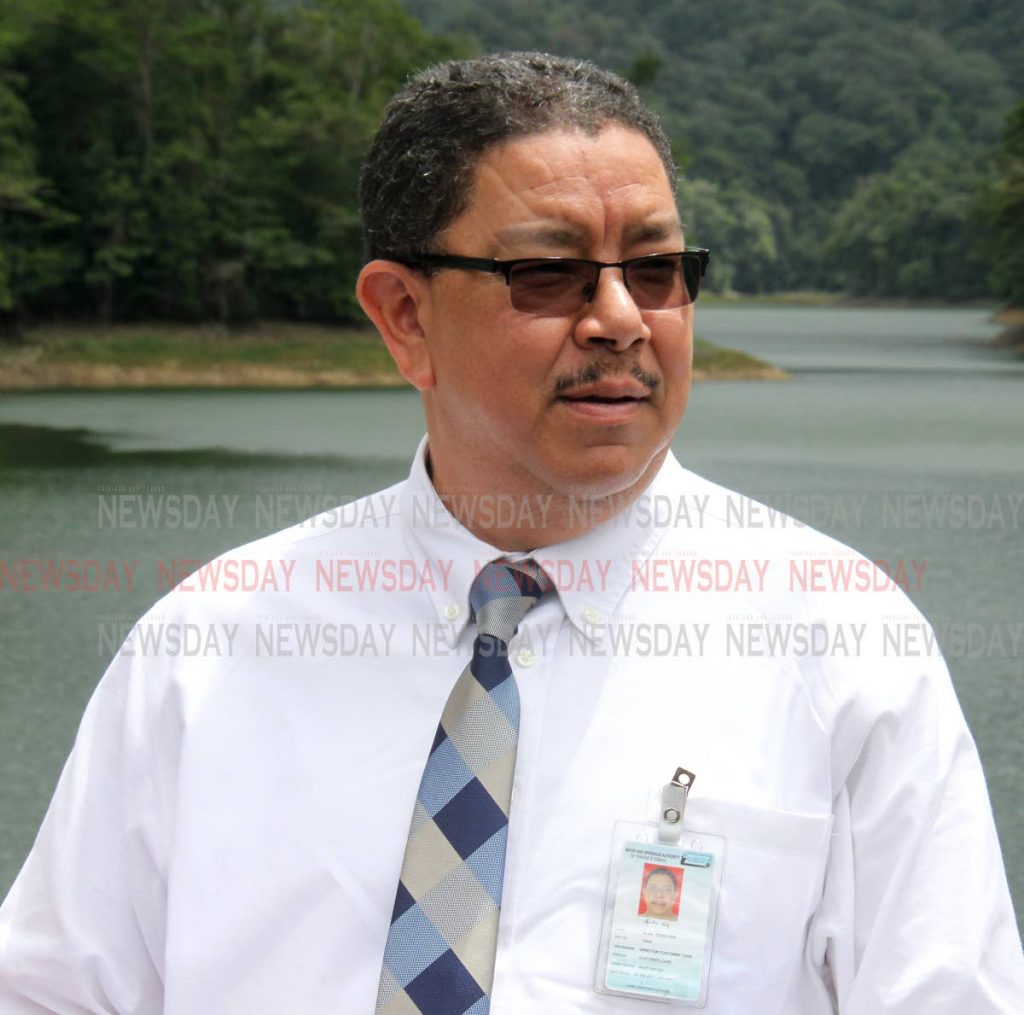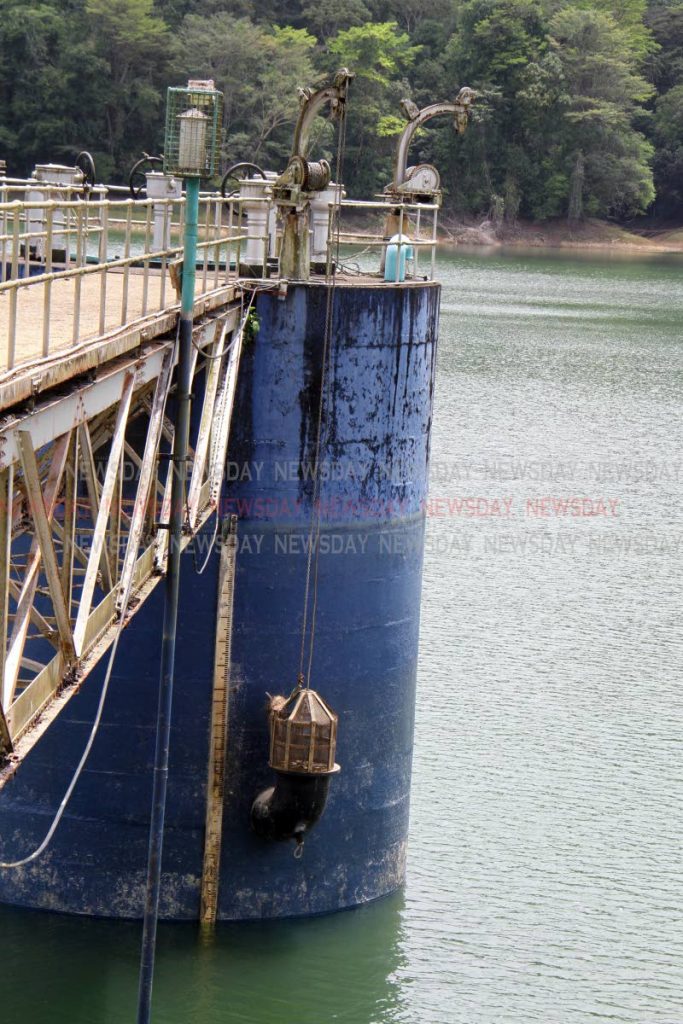Navet dam most severely affected by dry weather

The Hollis Reservoir in Valencia, the first to be built by the British, in 1937, with a capacity of a billion gallons, is at its lowest capacity since 1998.
The dam, which is usually at a 53 per cent capacity at this time of the year, is at 40 per cent.
Though 28 feet at its deepest point, it was now at 20 feet and is producing five million gallons per day (mgd) as compared to 8.4 mgd.
At its full capacity, Hollis Reservoir is a virtual sea of dark water surrounded by the lush foliage and greenery of the Northern Range. Now the water mark clearly shows where the level should be on the water tower.

The brief drive to the reservoir, still scenic, but showing definite signs of the ravages of the harsh dry season, showed once flowing streams now down to a couple of feet of water or just trickles in some areas.
Acting CEO of the Water and Sewerage Authority (WASA) Alan Poon King, who accompanied members of the media on a trip to the dam yesterday, said when Hollis Dam was first built, it served a large part of Trinidad,. With further development, it now supplies most of northeast Trinidad.
The other dams are Navet, Arena, which serves the Caroni water treatment plant, and Hillsborough in Tobago.
Poon King said of the four dams, Navet was the most severely affected.

"Based on the dry season conditions we have been experiencing, we have had to reduce production. Navet is the worst hit, and production has been reduced from 20 mgd to 15 mgd. At the Caroni plant we have reduced production from 75 mgd to 60 mgd. It did go as low as 50 mgd, but we increased production to best manage the supply we have.
"The Met Office has indicated that this month we could expect the normal low rainfall, but we are watching our levels and matching production."
The water shortage does not only come from an unusually dry season, but 45-50 per cent from leakages.
"The figure is not zero per cent in a perfect system. The way citizens utilise water: we need to review that."
But, he said, in good news, "WASA's backlog of leaks was 2,700 jobs and we have reduced that to 1,395."
Poon King said the majority of water shortage problems were in southeast Trinidad, with pockets in Central, and with northeast Trinidad having the most water available.
He said it will take an entire wet season for the reservoirs to fill back up to capacity, but if there were a drier-than-than normal rainy season, there could be challenges in the coming year.

Comments
"Navet dam most severely affected by dry weather"